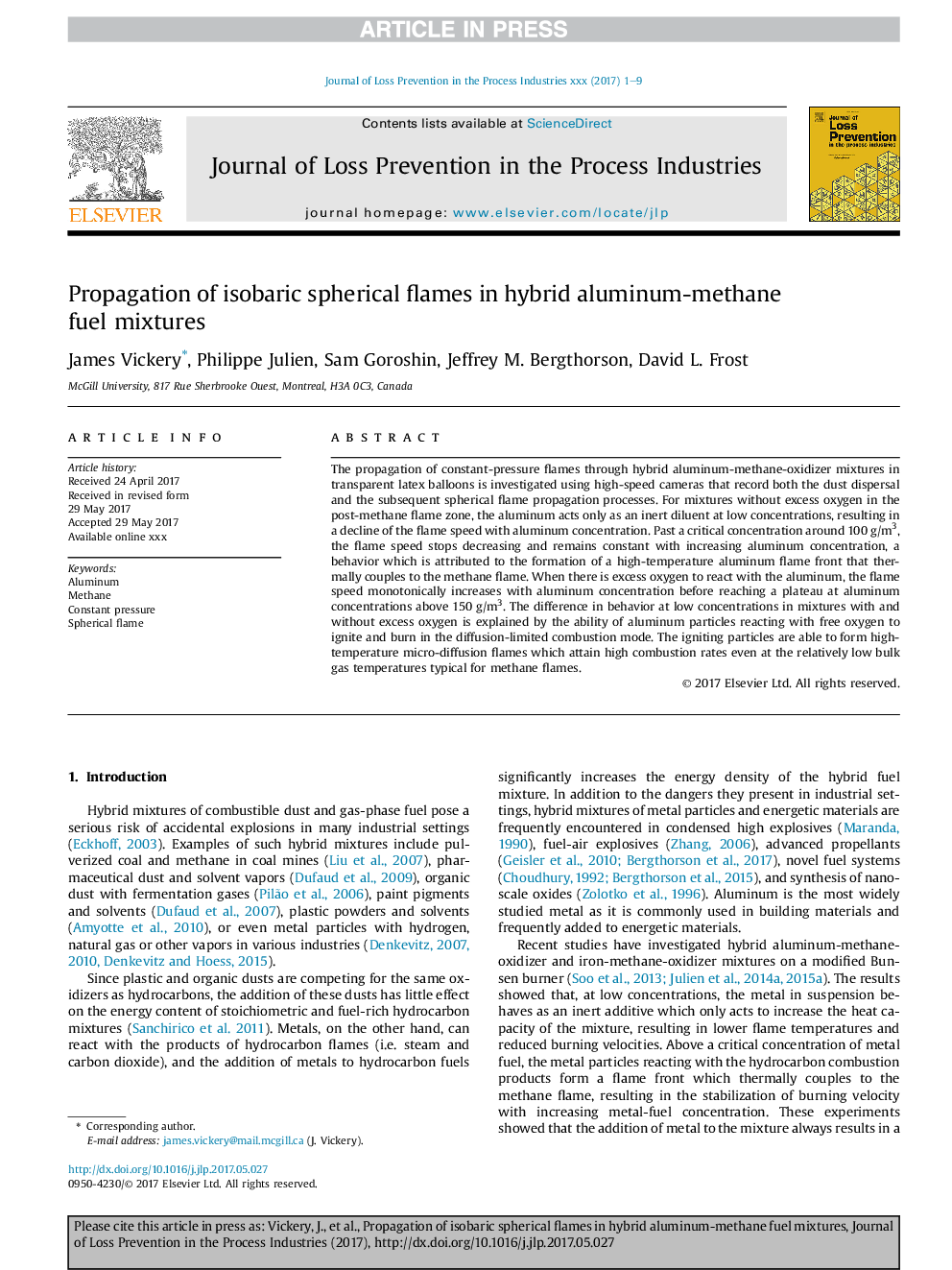| Article ID | Journal | Published Year | Pages | File Type |
|---|---|---|---|---|
| 4980344 | Journal of Loss Prevention in the Process Industries | 2017 | 9 Pages |
Abstract
The propagation of constant-pressure flames through hybrid aluminum-methane-oxidizer mixtures in transparent latex balloons is investigated using high-speed cameras that record both the dust dispersal and the subsequent spherical flame propagation processes. For mixtures without excess oxygen in the post-methane flame zone, the aluminum acts only as an inert diluent at low concentrations, resulting in a decline of the flame speed with aluminum concentration. Past a critical concentration around 100Â g/m3, the flame speed stops decreasing and remains constant with increasing aluminum concentration, a behavior which is attributed to the formation of a high-temperature aluminum flame front that thermally couples to the methane flame. When there is excess oxygen to react with the aluminum, the flame speed monotonically increases with aluminum concentration before reaching a plateau at aluminum concentrations above 150Â g/m3. The difference in behavior at low concentrations in mixtures with and without excess oxygen is explained by the ability of aluminum particles reacting with free oxygen to ignite and burn in the diffusion-limited combustion mode. The igniting particles are able to form high-temperature micro-diffusion flames which attain high combustion rates even at the relatively low bulk gas temperatures typical for methane flames.
Related Topics
Physical Sciences and Engineering
Chemical Engineering
Chemical Health and Safety
Authors
James Vickery, Philippe Julien, Sam Goroshin, Jeffrey M. Bergthorson, David L. Frost,
